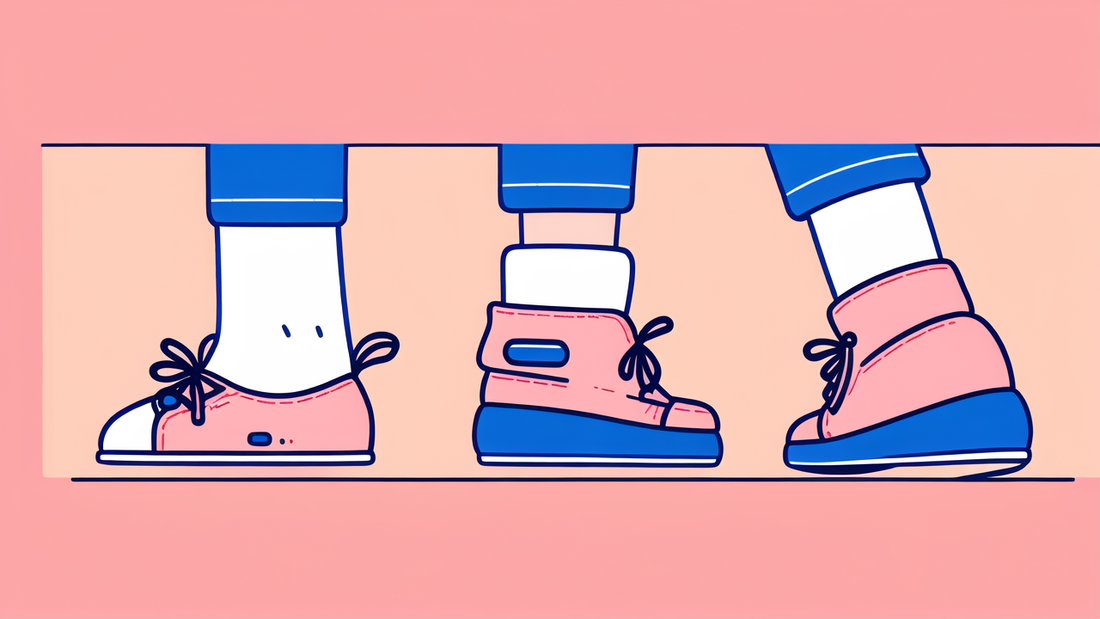
Thin Baby Socks vs. Regular Socks: What's Best for Your Infant?
Understanding the Difference: Thin Baby Socks Explained
What Are Thin Baby Socks?
Thin baby socks are specially designed footwear for infants. They are made from lightweight, breathable materials. These socks are thinner than regular socks, allowing for better air flow. They usually have a snug fit to prevent slipping off tiny feet.

Thin baby socks come in various sizes to fit newborns and older babies. They often feature non-slip soles for added safety. Some brands offer organic options made from natural fibers. These socks are designed to keep baby feet warm without overheating.
The Pros and Cons of Thin Baby Socks
Pros of thin baby socks:
- Lightweight and breathable
- Allow for natural foot movement
- Less likely to cause overheating
- Easy to put on and take off
- Often have non-slip soles for safety
Cons of thin baby socks:
- May not provide enough warmth in cold weather
- Can wear out faster than thicker socks
- May be more expensive than regular socks
- Limited color and design options
- Might not offer enough protection for outdoor use
When Is the Right Time for Thin Socks?
Thin socks are ideal for newborns and younger infants. They're perfect for indoor use and warmer weather. Use them when your baby is learning to crawl or walk. They allow for better grip and foot movement.
Thin socks are great for summer months or in heated homes. They're also good for babies with sensitive skin. Switch to thicker socks when the temperature drops. Always check your baby's feet to ensure they're not too cold or hot.
The Benefits of Thin Baby Socks for Newborns
Why Thin Socks Are the Best Choice for Babies
Thin socks offer several benefits for newborns. They allow for natural foot development. Babies' feet need room to grow and move freely. Thin socks don't restrict this movement. They also help prevent overheating, which is crucial for infants.

These socks are easy to put on and take off. This is helpful during diaper changes. Thin socks are less likely to bunch up in shoes or booties. They provide a better fit, reducing the risk of blisters or irritation.
Thin socks also promote better balance. As babies learn to crawl and walk, they need to feel the ground. Thinner socks allow for this sensory input. This can help with motor skill development.
The Importance of Choosing the Right Socks for Your Baby
Selecting the right socks is crucial for your baby's comfort and development. Proper socks help regulate body temperature. They protect delicate skin from friction and blisters. The right socks can also support healthy foot growth.
Consider these factors when choosing baby socks:
- Material: Opt for breathable, natural fibers
- Size: Ensure a snug but not tight fit
- Season: Choose thickness based on weather
- Activity: Consider grip for crawling or walking babies
- Skin sensitivity: Look for hypoallergenic options if needed
Remember, babies grow quickly. Regularly check if socks still fit properly. Ill-fitting socks can cause discomfort or hinder movement.
How Thin Socks Can Help with Baby Sock Syndrome
Baby sock syndrome refers to circulation issues caused by tight socks. It can lead to marks or indentations on a baby's legs. Thin socks can help prevent this problem. They're less likely to leave marks or restrict blood flow.
Thin socks are more flexible. They adapt better to your baby's foot shape. This reduces pressure points that could cause discomfort. They also allow for better air circulation, preventing sweaty feet.
If your baby has experienced sock marks before, try switching to thin socks. Monitor your baby's feet and legs regularly. Look for any signs of discomfort or circulation issues. Always choose socks that fit well without being too tight.
Making the Decision: Regular Socks vs. Thin Baby Socks
Comparing the Two Options: Durability and Comfort
Regular socks are often thicker and more durable. They may last longer, especially for active babies. However, they can be bulky and less comfortable in warm weather. Regular socks might restrict foot movement more than thin socks.

Thin socks offer better comfort and flexibility. They allow for natural foot movement and growth. But they may wear out faster, especially at the toes and heels. Thin socks are ideal for daily indoor use and warmer months.
Consider these factors:
- Climate: Thin socks for warm weather, regular for cold
- Activity level: Regular socks for more active babies
- Foot sensitivity: Thin socks for babies with sensitive skin
- Budget: Regular socks might be more cost-effective long-term
- Shoe fit: Thin socks work better with tight-fitting shoes
The Final Verdict: What Parents Say
Many parents prefer thin socks for their newborns and young infants. They report fewer issues with overheating and sock marks. Parents appreciate the ease of putting on thin socks. They also note better foot movement for crawling babies.
Some parents prefer regular socks for older babies. They find them more durable for active toddlers. Regular socks are often favored in colder climates. Many parents keep both types on hand for different situations.
Common parent feedback:
- Thin socks are best for summer and indoor use
- Regular socks work well for winter and outdoor activities
- Some babies are more comfortable in thin socks
- Regular socks last longer but may be less comfortable
Tips on Choosing the Right Socks for Your Baby
- Consider your baby's age and activity level
- Choose natural, breathable materials like cotton or bamboo
- Look for non-slip soles for crawling or walking babies
- Ensure the elastic isn't too tight around the ankle
- Pick the right size - socks should fit snugly but not squeeze
- Opt for thin socks in warm weather or heated homes
- Use regular socks for extra warmth in cold conditions
- Check for any signs of discomfort or marks from socks
- Wash new socks before use to remove any irritants
- Have a mix of thin and regular socks for different needs
Remember, every baby is unique. What works for one may not work for another. Pay attention to your baby's comfort and adjust as needed. Don't hesitate to try different types of socks to find the best fit for your little one.
